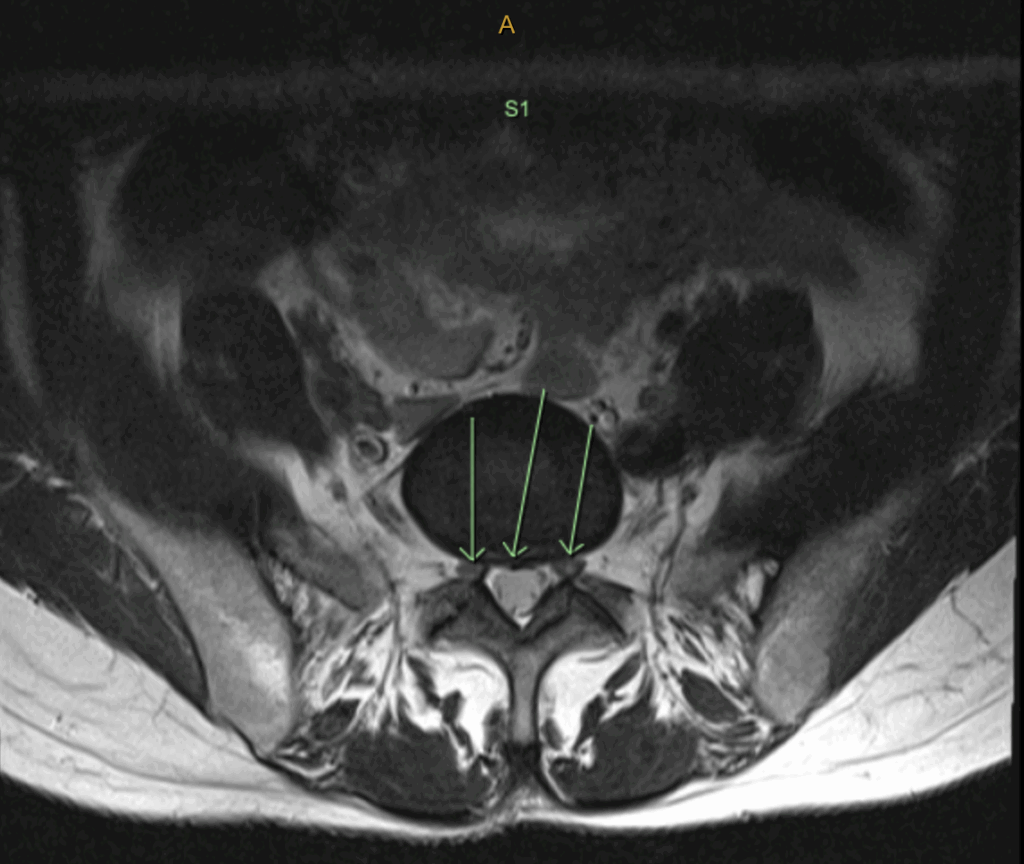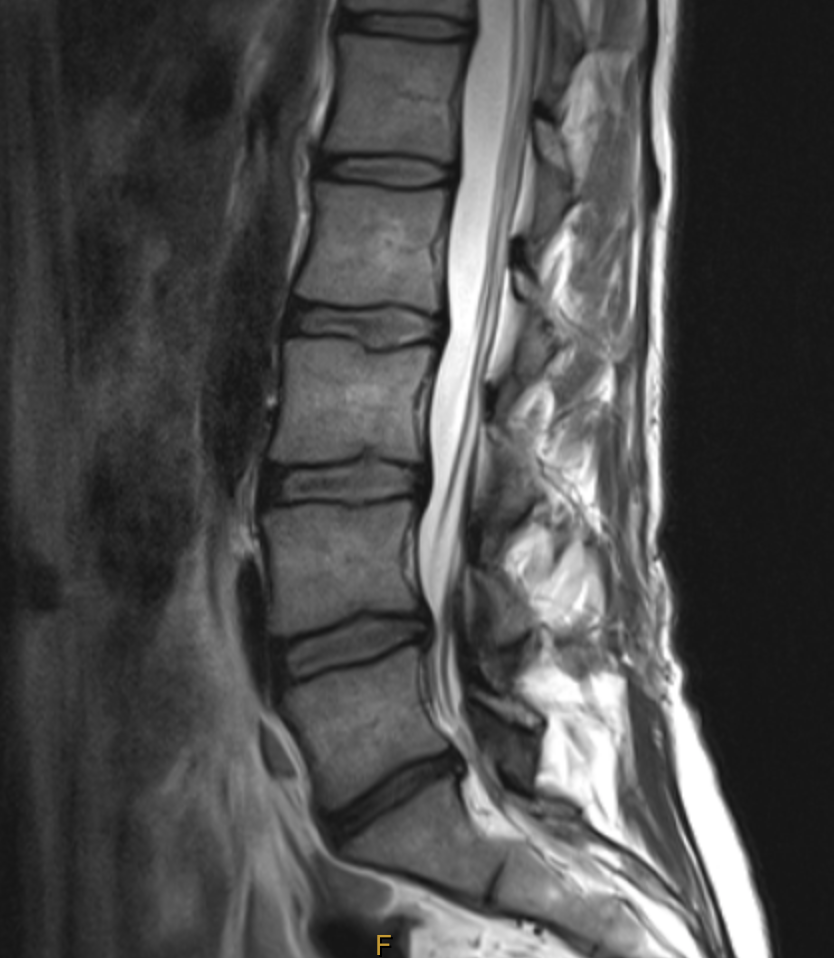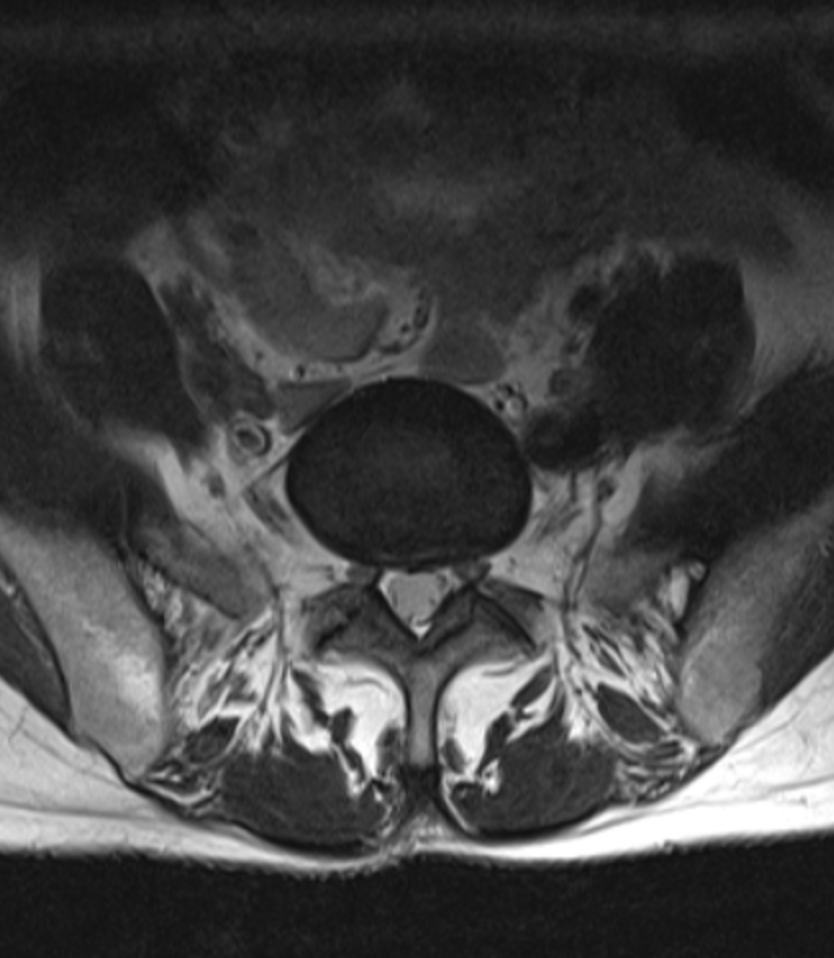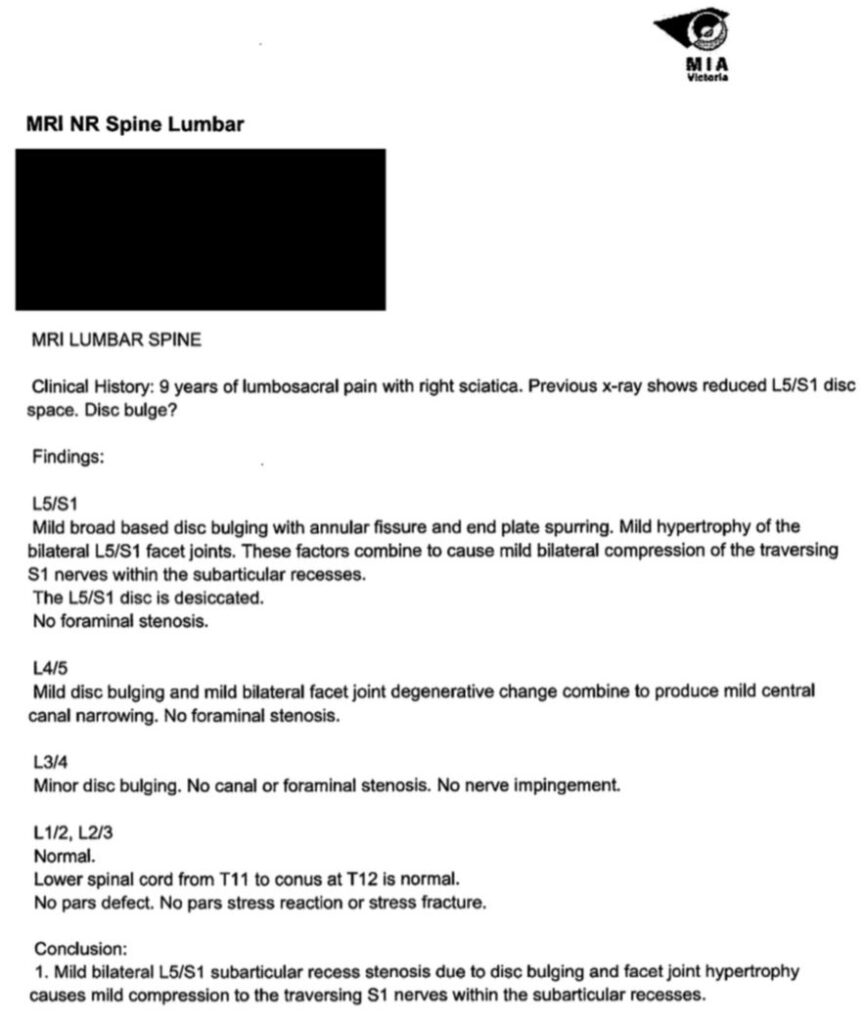Presentation:
Since Sarah’s initial episode of severe low back pain 9 years previously she had made a remarkable recovery. She was able to play her beloved basketball and happily engage in her other favourite thing, gardening.
While she had experienced occasional relapses over that time, they were nothing like the first episode and always resolved completely with timely adjustments. She was an excellent patient; always following instructions and advice, and staying regular with her maintenance.
Symptoms:
On 9th October 2014 Sarah had tipped over a heavy concrete birth bath so she could clean it. As she tried to lift it upright again, she felt a sudden shot of severe pain across her lumbosacral junction. This was soon accompanied by muscle spasm and antalgia. She could walk but with difficulty and required assistance.
She was helped inside and onto her bed where the only comfortable position for her was supine with her two pillows under her knees. She was given an ice pack which was applied in a cycle of 20min on, 20min off, repeated for 2 hours, a break for 2 hours and repeated again.
The combination of rest and ice reduced the pain enough for her to have a night of broken sleep. The following day she reported that the low back pain was slightly better but she now had full right leg sciatica and a strongly positive Valsalva sign. There was no indication of Cauda Equina.
Examination:
Sarah was able to get to the clinic the following day but was clearly in a lot of pain. She was antalgic to the right and the paraspinal muscles were effectively rigid.
Orthopaedic:
Lumbar ranges of motion were all but impossible to test due to the muscle spasm. Any attempt to put her through them would have been both futile and possibly hazardous.
Due to the Hi-Lo action of our treatment tables we were able to gently lower her into a prone position where an examination could better performed.
Prone leg length comparison showed a slight shortening of the right leg. She could tolerate a unilateral Nachlas test on either side, but only to ~40° before pain started. A bilateral Nachlas test was not possible beyond ~20°. Anything involving pelvic nutation was painful. It was not possible to test her Gluteal or Hamstring strength due to the level of pain.
Neurological Examination:
The Right Patella and Achilles deep tendon reflexes were markedly reduced (1/5)
Sarah reported no numbness or paraesthesia, however she was unable to heel walk easily on the right.
Imaging:
On the basis of the above test results, it was clear that Sarah had suffered a significant disc injury, most likely at L5-S1. It was determined that she needed an MRI to evaluate the extent of the injury, so she was referred to Victoria House Medical Imaging for a 3T MRI (see images and report below)




Diagnosis:
The images confirmed the diagnosis – this was indeed a significant disc injury.
Report of Findings:
When Sarah presented for the Report of Findings the following day we went through the films and test results together.
I explained to her that this had probably been coming for a long time. The previous episode 9 years ago was almost certainly the first substantial injury to the disc, and had left an area of damage that predisposed her to future issues. It was also pointed out that, in light of the fact that both parents had suffered from similar injuries, she had almost certainly inherited this tendency.
Although the injury at L5-S1 was the current problem and could be managed, of greater concern now was the risk of an even worse injury happening at L4-L5 in the future. I therefore had to give her the unwelcome news that her basketball career was probably over.
Treatment Given:
Over the following 3-4days, Sarah’s pain gradually subsided to the point where I could adjust her.
Testing confirmed that the system most likely to help her was AMCT, so we began adjustments twice per week. I used the AMCT analysis protocol using an Impulse iQ instrument from Neuromechanical Innovations.
The most common listings were Right Medial Meniscus, Left AS, Right PI, Right L5, Right L3, Right T12, Right T7 and Right C5. The iQ was set at Level 1 for the Medial Meniscus and C5, Level 3 for Pelvis and Lumbars, and Level 2 for the Thoracics.
Progress & Outcome:
Sarah’s progress was gradual. She had several episodes of relapse; sometimes triggered by a particular action or position, other times they were inexplicable.
After a period of approximately 8 weeks her symptoms had reduced to the point where she could go about her daily activities with caution. Any periods of prolonged sitting (more than 45min-60min), would cause her spine to go into protective muscle contraction. This was not a sudden spasm but gradual contraction that would render the area totally immobile. Gentle walking would usually release the contraction within 10min-15min.
By 6 months Sarah was able to do everything in her usual fashion provided she did it mindfully.
“If it’s never been right, you don’t know it’s not right until it hurts. Once it’s been right, you’ll know as soon as it’s not before it hurts.”

